Orion continues its journey back to Earth on 7 December, flight day 22, of the 25-day Artemis I mission. Flight controllers and engineers continue to test the spacecraft and its systems in preparation for future flights with humans aboard.
Engineers conducted the second part of the propellant tank slosh development flight test, called propellant slosh, which is scheduled during quieter parts of the mission. Propellant motion, or slosh, in space is difficult to model on Earth because liquid propellant moves differently in tanks in space than on Earth due to the lack of gravity. Slosh has been investigated on the International Space Station using model satellites in preparation for farther exploration missions such as the Artemis to the Moon and beyond.
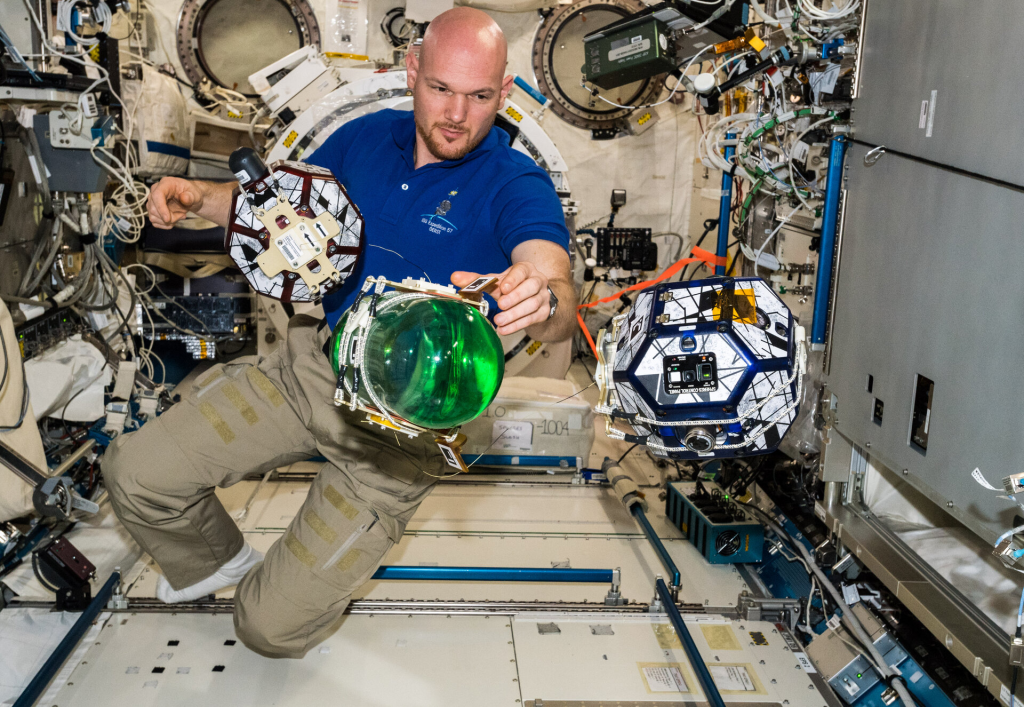
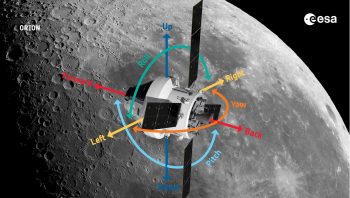
The Artemis I slosh tests call for flight controllers to fire the reaction control system thrusters with the propellant tanks filled at different levels. The reaction control thrusters are located on the sides of the service module and can be fired individually to move and rotate the spacecraft in all directions. Each engine provides about 220 N of thrust and are grouped into pods of four. The test involved measuring the effect the propellant sloshing has on spacecraft trajectory and orientation as Orion moves through space.
The first test was first performed on flight day eight after the first Moon flyby, and now again after the return flyby, so the engineers can compare data at points in the mission with different levels of propellant onboard. Around 5470 kg of propellant has been used, which is 98 kg less than estimated before launch.
Tobias Langener, ESA’s propulsion lead for the European Service Module, said, “The test went well and the reaction control thrusters worked in unison to really slosh the propellant around. The data is coming down and will be analysed over the coming months so that NASA can optimize their spacecraft controls, preparing for the astronaut flights!”
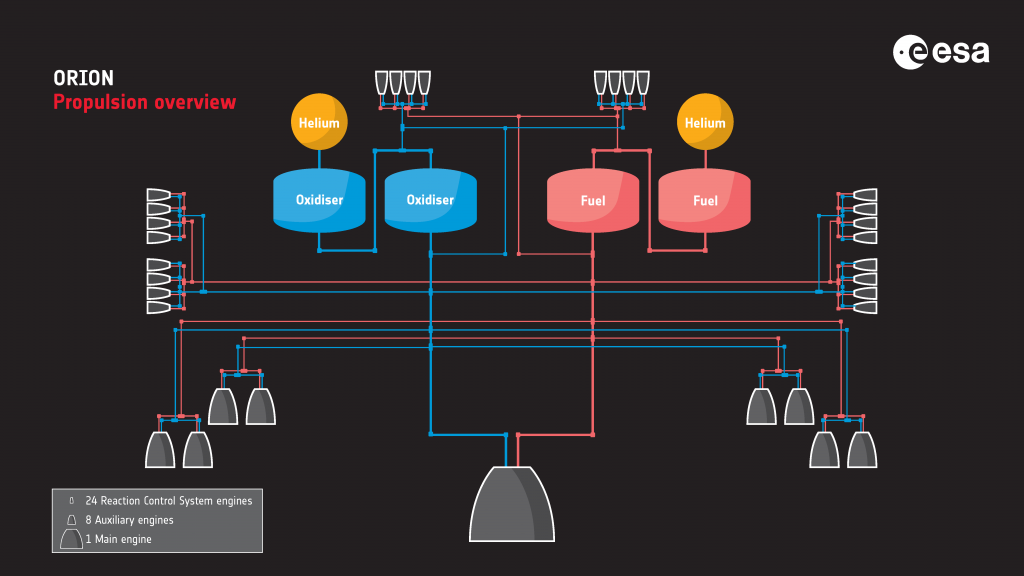
The slosh tests are a guidance, navigation and control test objective. You can reenact this test at home: take a bottle that is half-filled with liquid, and throw it trough the air (safely, of course). At some point the bottle will start wobbling and become unstable… the guidance navigation and control team for Orion want to characterise this wobble in space so they can use the reaction control thrusters to control and counteract the motion.
A few key milestones for Orion remain, including the entry system check outs on flight day 24 and propulsion system leak checks on day 25.
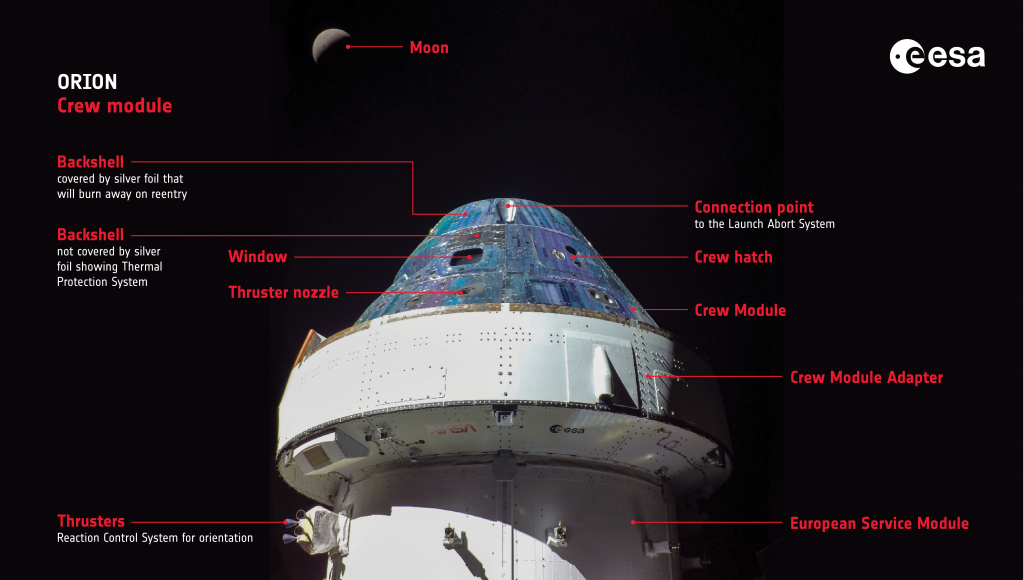
Orion will travel at around 40 233 km/h while reentering Earth’s atmosphere, 26 times the speed of sound, and faster than the International Space Station’s cruising speed as it orbits Earth. 40 minutes before Orion crew capsule hits our atmosphere it detaches from the European Service Module and Crew Module Adapter, their mission is complete having bought the crew capsule around the Moon and back.
The high-speed return of the crew capsule is set to thoroughly test the world’s largest ablative heat shield by reaching temperatures up to 2760°C – approximately half the heat of the Sun’s exterior. The heat shield is located at the bottom of the Orion capsule, measuring 5 m in diameter, and sheds intense heat away from the crew module as Orion returns to Earth. The outer surface of the heat shield is made of 186 blocks of a material called Avcoat, a version of the material used on the Apollo capsules. During descent, the Avcoat burns off transporting heat away from Orion.
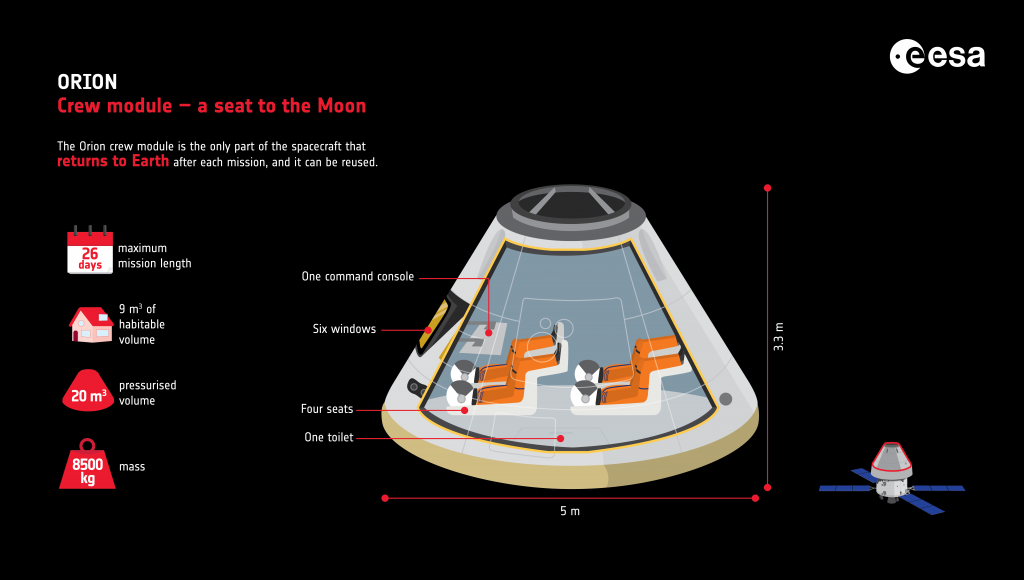
Just after 22:00 CET (21:00 GMT) on 7 December, Orion was traveling 376 747 km from Earth and 205 513 km from the Moon, cruising at 1319 km/h.

 Automated Transfer Vehicle page
Automated Transfer Vehicle page ATV blog archive
ATV blog archive
Discussion: one comment
Waow! This slosh/whobble-test sounds realy like a “detail”. For the average human, it’s incredible to hear how many “details” the space agencies have to think about! Thanks for sharing this kind of concern!